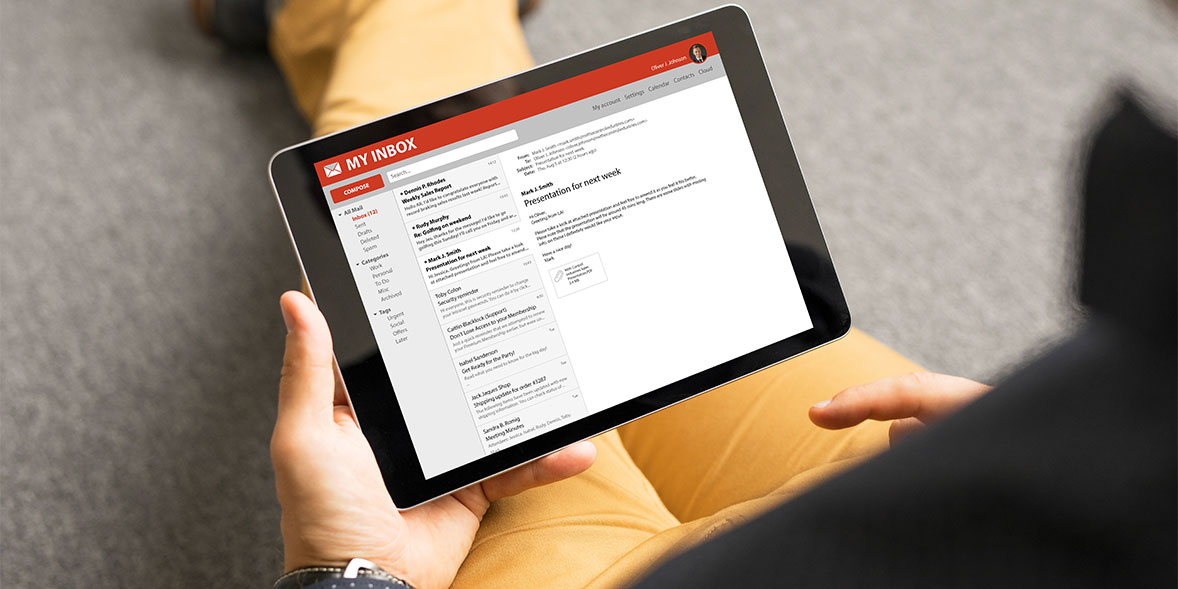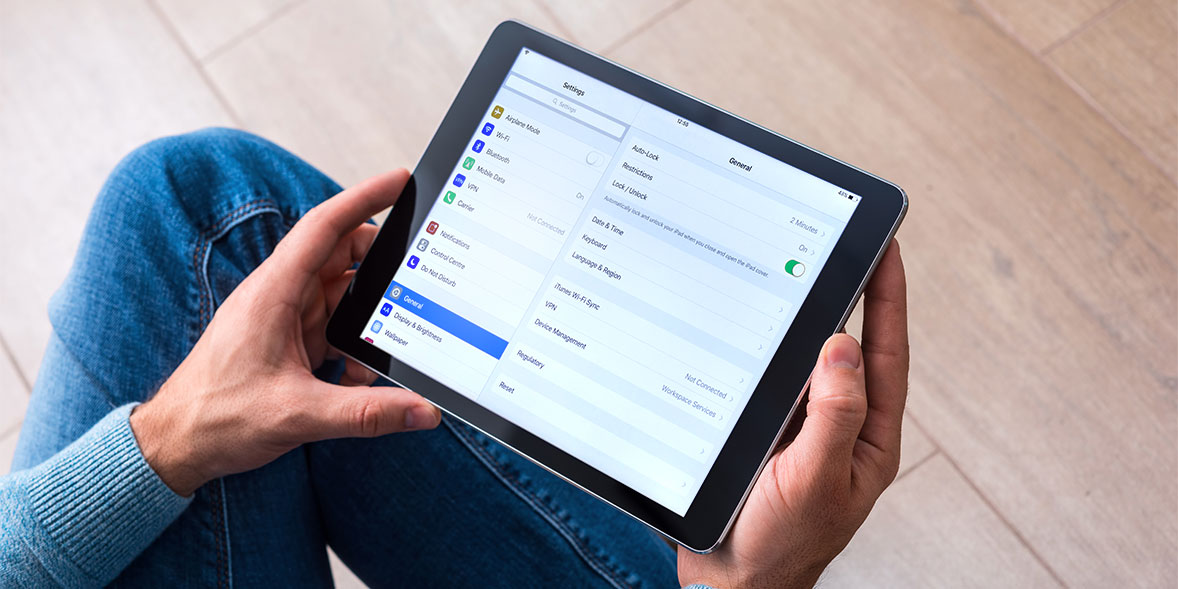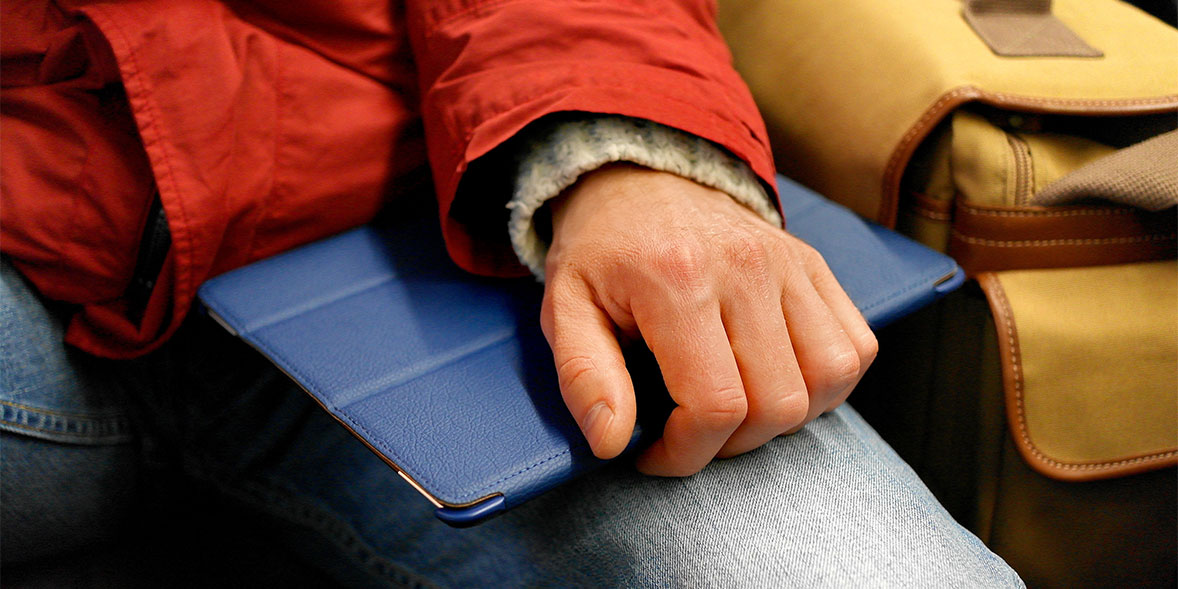A new tablet? Someone's been good this year. Whether it's an iPad, an Android model from Lenovo, Samsung and the like, or an Amazon Fire tablet, there's plenty they can do.
The best tablets make sure all their features don't hit you all at once like a Tyson Fury hook, leaving you dazed and confused, but there's a still a lot to take in once you've got through the setup.
You don't want to miss out on any of the things your tablet can do and the five tips we've picked here will give you a good base to explore the nooks and crannies of your high-tech gift.
Did you get a lump of coal instead? Take a look at the best iPads and tablets
1. Connect your accounts

Regardless of who made your new tablet, you will need an account to set it up. This could be an Apple iCloud or Google account, which will then be accessible on the tablet. But you're not limited to these.
Tablets usually have an email app built-in and it will work with your address even if it's not from the same brand as your tablet. You can attach your Google email address to an Apple email app, for example, or connect a Hotmail address to a Gmail app.
It's not just email accounts, either. You can use WhatsApp on a tablet, too, although you can only have it on five devices at once.
Of course, if you'd rather your tablet be free form notifications, then you don't have to connect any accounts beyond the one you used to set the tablet up.
2. Tweak your settings for maximum battery

We expect a Best Buy tablet to manage over 10 hours battery life, regardless of what you're doing, but there are ways you can eke out a bit more juice.
The display is the biggest drain on the battery, so head to screen settings first. It's unlikely you'll ever need your tablet to be at full brightness, unless you're using it outdoors in direct sunlight, so turn it down to where it feels comfortable.
Try out the adaptive screen feature, too, which adjusts the brightness based on ambient light. This can make your battery last longer.
Like a smartphone, tablets have numerous sensors and connections - many of which you won't need when you're at home. Turn off NFC and location services in particular, since you're unlikely to be making any contactless purchases in your living room. You probably won't need location services too often if you don't plan on taking your tablet out and about.
When it comes to iPads, you can save money if you're not wedded to a brand new model. Here's our guide on buying a refurbished iPad.
3. Get a case

Even if you don't plan to take your tablet outside, you should still consider a case. Screen strength has come on leaps and bounds, but no manufacturer will guarantee their tablet display will survive a drop on a hard floor. So don't risk it.
Case costs vary greatly, but even if you buy a cheaper rubber-feel case, it's better than nothing. Most will create a narrow lip around the screen to raise it slightly, so you can put it down flat on a table without worrying about scratching it, too.
But even a case won't protect a tablet from every incident and most aren't waterproof, unlike phones, so you'll still need to be careful.
Capture your Christmas with our tips on how to nail winter and Christmas photography
4. Get some apps and get rid of others (safely)

Tablets aren't short of built-in apps taking up precious hard drive space. You can usually uninstall, or at least disable, apps so they don't bother you with notifications.
Usually, just holding down the app icon will give you the option to uninstall it.
More exciting is downloading new apps. Make sure you're getting them from your device's dedicated app store, rather than online. Apps get approved and vetted for safety and security before being put on an app store, so they're less likely to compromise your tablet. It's not a perfect system, however.
Here are some red flags to help you spot an unsafe app.
- Check who developed the app, see what else they've made and see if those apps seem legitimate
- See if there's any privacy policy information, particularly around data collection
- When looking at app reviews, remember they can be faked. So check the negative, as well as the positive, ones
- Apps will ask for permissions, such as accessing your contacts, file storage or certain features of your phone, such as your camera. If any of the permissions seem unnecessary for the sort of app you're considering, then don't download it
- Check when the app was last updated. Old, out-of-date apps are more vulnerable to hacks and exploits, so try and find something that's being updated regularly.
It's a doddle to download and uninstall apps, so download as many free ones as you like. Don't be afraid of experimenting and giving something a go. Assuming you didn't pay for it, you've got nothing to lose.
Bonus tip - learn how to connect your iPad or tablet to your TV to see things on an even bigger screen.
5. Choose a good browser and don't stick with default apps
Amazon, Apple, Google and Microsoft all want you to use their browser and it will be the default when you start using the internet on your tablet. But it's up to you. If you hate Safari or Chrome, then head to your tablet's app store and download whatever alternative you want.
It's true of most apps, to be honest: email services, file managers, cameras, video call apps, media browsers and more usually have a manufacturer-made default app pre-installed. If you don't like them, then try some alternatives from the app store.
It's not just apps either. You could also try a new keyboard if you don't like the stock one that's built into your tablet. These are available to download, just like any other app.
Tech tips you can trust — get our free Tech newsletter for advice, news, deals and stuff the manuals don’t tell you
undefinedsource https://www.which.co.uk/news/article/5-things-to-do-with-your-new-ipad-or-tablet-atz486P4tk50

I appreciate the tips for maximizing my new tablet’s features.
ReplyDelete